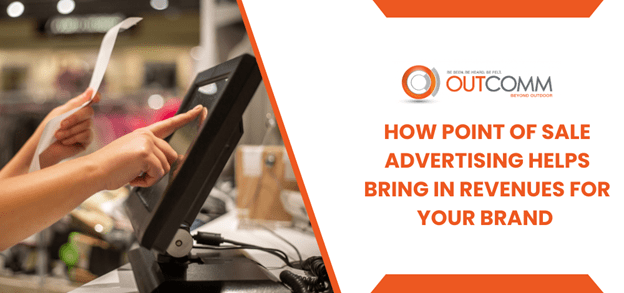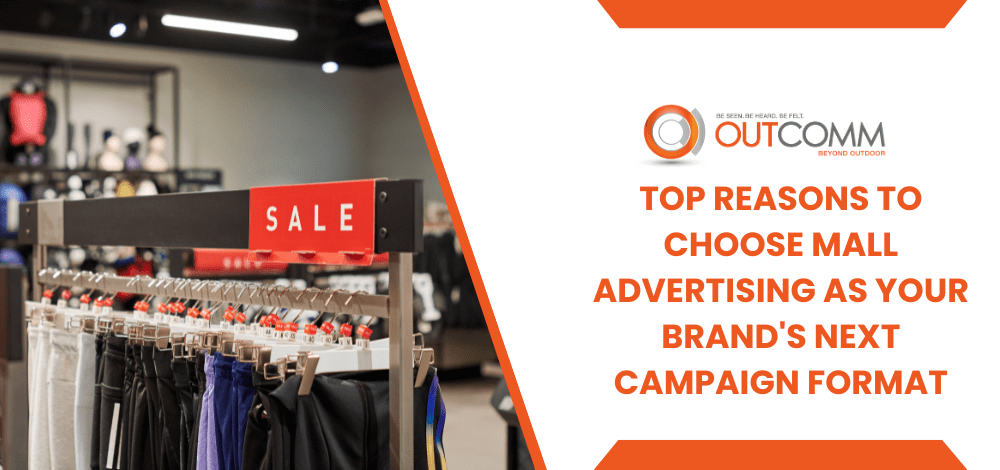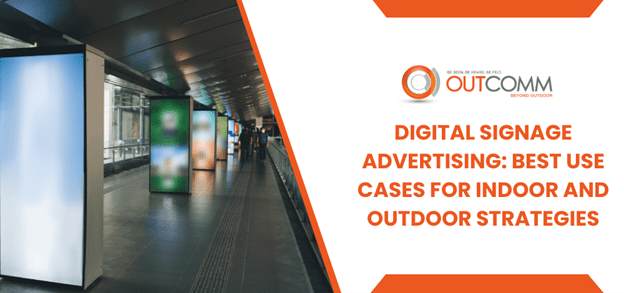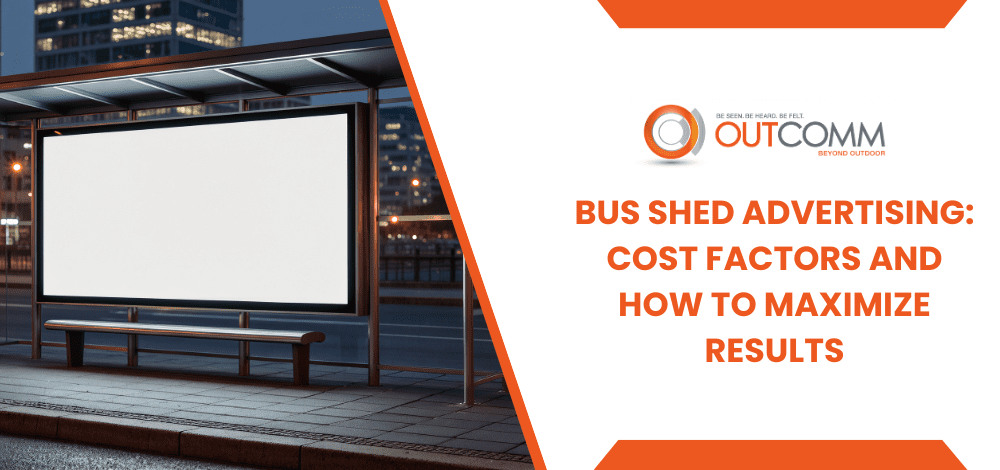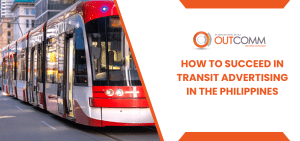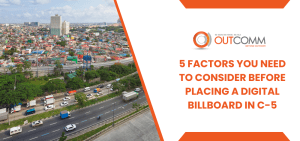
The 2002 sci-fi film Minority Report featured a scene where the main protagonist enters a shopping center and encounters several holographic advertisements. Aside from being holographic, what makes those ads extraordinary is the personalized approach toward the person passing by.
In the scene from the movie, all of the ads are personalized based on the main protagonist’s interests. The ads even mention his name several times to get his attention as he passes by.
This form of advertising was still a concept when this movie was released. And people were amazed at how future technology can personalize advertisements according to your interests. In today’s information age, personalized advertising has now become ubiquitous.
It is now common to see ads on your mobile phone that predict what you are looking for at the moment. But how does this work? And is it possible to have the same experience in digital OOH – just like in Minority Report?

Personalized Advertising as the Future of Digital OOH
Personalized advertising in the OOH industry is still uncommon. But it might happen soon because of the new media buying method called programmatic advertising.
Last year, Google announced that it is making digital out-of-home (OOH) advertising available for all users of the Display & Video 360 (Google DV360) platform. With this update, advertisers can now use DV360 to place ads on digital OOH platforms in public spaces such as bus sheds.
How does the technology behind the media buying platform work? What makes it different from traditional media buying methods for advertising?

What is Programmatic Digital Out-of-Home?
Programmatic Digital Out-of-Home (pDOOH) is the latest form of advertising where no humans are involved during the purchasing process. It is also an automated method of buying and selling digital billboards and displays.
The media buying process in programmatic digital OOH is done by computer algorithm via a Demand-side Platform (DSP) or Supply Side Platform (SSP) instead of direct negotiations with publishers.
This means that you don’t have to talk directly or personally with advertisers or publishers. Instead, they rely on an automated system that determines what ad space is available in your targeted areas. The pDOOH system then bids on those spots using algorithms.
Unlike digital programmatic advertising for digital advertisements on social media and websites, digital OOH is a “one-to-many” medium. This means that it will always serve on screens that index high for your audience, and reach those outside your audience due to the nature of the OOH placement.

How Programmatic Digital OOH Advertising Works
Buyers specify the media they are interested in purchasing on a digital out-of-home DSP to reach a specific audience. Buyers may use extra data and triggers to target a specific audience like any other DSP.
When these requirements are satisfied, such as when there is a significant concentration of the target audience in the vicinity, the media is bought automatically, and adverts will be displayed on the LED screens.

Advantages of Programmatic Digital OOH Advertising
1. pDOOH is faster and more flexible
The Programmatic Digital OOH system handles everything by placing your digital ads in specific locations at certain times of the day based on relevancy. There is no need to be concerned about overspending since budgets are set aside for each campaign.
Businesses can leverage data to target people more effectively than before with programmatic digital OOH. This means that businesses may target relevant audiences across multiple channels while saving money by lowering the costs of human error associated with traditional media buying strategies.
2. pDOOH enables better audience targeting
Programmatic Digital OOH is data-driven digital outdoor advertising. Data science technologies such as artificial intelligence (AI) and machine learning may target specific audiences depending on demographics such as age range, location, gender, household income level, and household size.
For example, when someone searches online for a particular product or service-related term, such as “cat food,” the pDOOH system creates personalized digital ad placements based on what it knows about that consumer’s preferences.
3. pDOOH lets you buy ads in real-time
Programmatic Digital OOH is widely accessible through major DSPs by allowing advertisers to set their rates for digital advertisements on publisher websites—which means they can choose where and at what price they want their ads to appear!
Real-time bidding (RTB) removes the need for brokers, price manipulation, and ad space dominance. This ensures that your advertisement is guaranteed to appear when people look at anything on their smartphones or laptops.
4. pDOOH is cost-efficient
Programmatic Digital OOH advertising lets you see precisely how much your ad campaign costs in real time, which is a massive benefit. A dashboard shows the entire ad campaign displaying the cost per view and audience count. This allows advertisers to measure their campaigns more accurately and make adjustments as necessary.

Challenges with the Programmatic Approach to Digital OOH
The programmatic approach to digital out-of-home advertising is an exciting way to reach audiences and drive results. However, there are still challenges to overcome before it can become mainstream.
1. Advertiser Awareness and Education
Many advertisers are unaware that digital out-of-home advertising exists or mistake it for digital billboards. Because outdoor advertising is a one-to-many medium, several digital programmatic strategies would need to be modified for pDOOH. Programmatic Digital OOH adoption relies on all industry players recognizing the benefits of programmatic trading.
2. Industry Fragmentation
The digital out-of-home industry is fragmented, with several companies providing various services. As a result, advertisers may struggle to find the perfect partner who can help them reach their target demographic with the right message in the right place at the right time.
Furthermore, advertisers have requested uniformity in the requirements of OOH advertising platforms and media units. This should make it easier to select ad spots to purchase across greater geographical ranges and networks.
3. Standardization
Digital out-of-home advertising is still characterized by its “digital” aspect. There is not much consistency among experiences across devices, formats, or locations (yet). For example, what defines an impression, or how pricing for dynamic creatives should be controlled.
Examples of Ads That Use Programmatic Digital OOH
Audience-Based Ads
These ads are triggered by the audience profile of the people who are within the range of the digital display. The example below shows a digital ad on EDSA Guadalupe LED for a fashion store targeted towards people of the “fashion lover” audience profile who pass by the area.

Time-Based Ads
These ads are triggered by certain calendar events or times of the day. The example below shows a digital ad on EDSA Guadalupe LED for Mother’s Day targeted towards young adults in the area who may want to celebrate the special day with their mom.

Context-Based Ads
These ads are triggered by specific situations happening in the area, which are often done in real-time. Examples of situations include the traffic and the weather.
“I Made It Just For You!”
Programmatic digital out-of-home advertising is an excellent approach to reaching your key demographic cost-effectively and efficiently. With the ability to target consumers more precisely, marketers can design more successful campaigns than ever.
Advertisers who apply for programmatic digital OOH advertising do not need to worry about scheduling their ads on the digital display. The publisher can show the ads based on specific triggers, making the reach more efficient and effective than playing the ad randomly.
Advertisers can finally focus more on experimenting with new creative concepts using programmatic digital OOH without worrying about financial constraints or missing out on opportunities due to a lack of inventory availability.
With the way digital OOH advertising is evolving these days, don’t be surprised if you eventually see an advertisement that mentions your name. After all, we are already living in the future.
Let’s get digital!
Outcomm offers digital OOH solutions in Metro Manila, particularly in EDSA, C5 Road, McKinley Hill, and NAIA.
Call Outcomm at +63 917 537 5110 or (02) 8856-2285 or email us at sales@outcomm.ph and start your next digital OOH ad campaign today.

